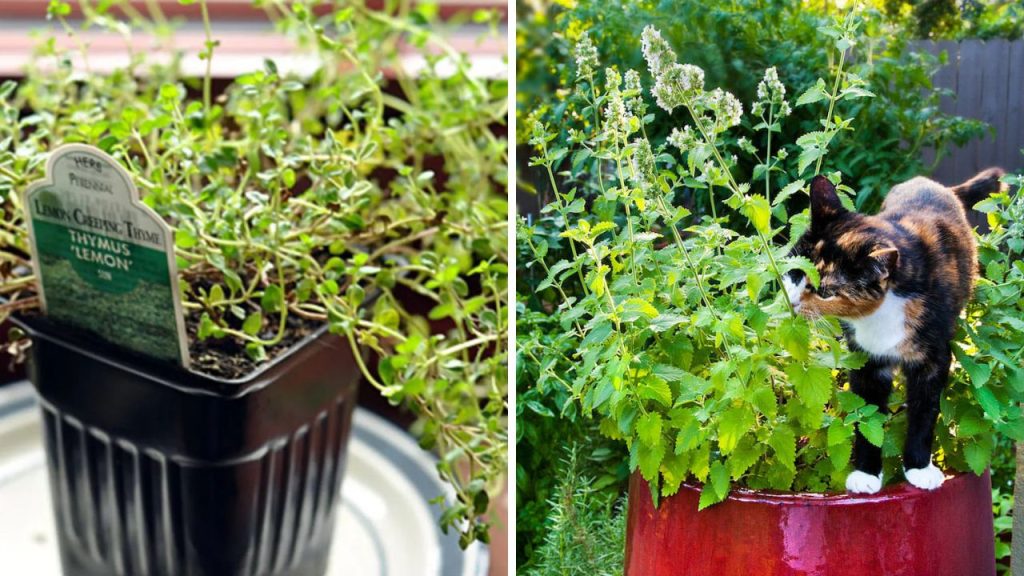Creating a minimalist garden doesn’t mean sacrificing personality or comfort. In fact, it can transform your outdoor living space into a modern sanctuary of simplicity and tranquility. Whether you have a sprawling backyard or a tiny back porch, minimalism can enhance the beauty of your space with clean lines, neutral tones, and intentional design.
From sleek seating areas to carefully curated greenery, these minimalist garden ideas will help you achieve a peaceful retreat right outside your door. Ideal for modern patio furniture lovers, back porch decor enthusiasts, and anyone craving a calm, clutter-free space—these ideas bring both style and serenity to your outdoor life.
Here are 21 minimalist garden ideas that blend aesthetic elegance with functional design.
1. Gravel and Stone Zen Garden
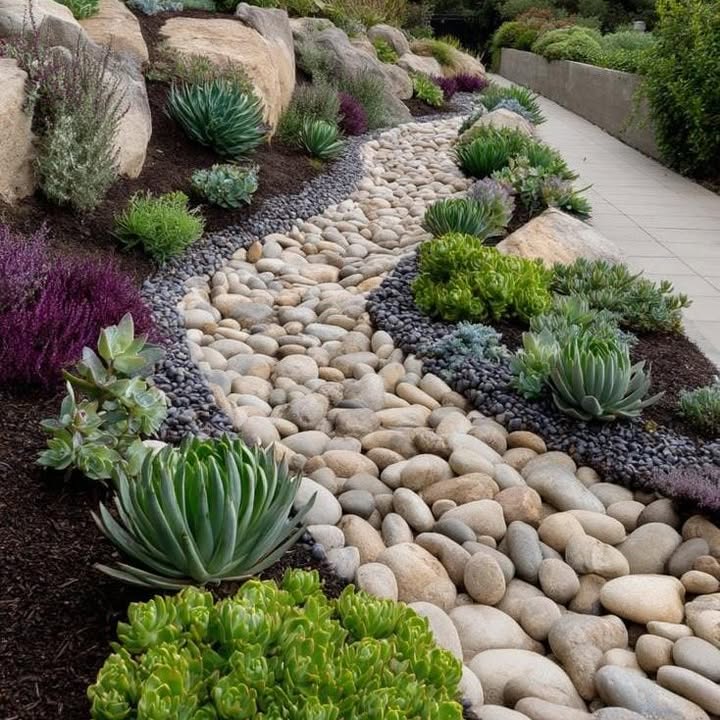
A gravel and stone garden is one of the most iconic minimalist styles, inspired by traditional Japanese Zen gardens.
These gardens often feature raked gravel to mimic the look of flowing water, large natural stones strategically placed for balance, and a few carefully selected plants like dwarf pines or bamboo. The key is restraint—avoiding overcrowding and letting negative space work its magic.
Gravel is not only low-maintenance but also cost-effective and environmentally friendly. It helps with drainage and suppresses weeds, making it ideal for those who want a minimalist yet practical space. You can edge your garden with dark steel or natural stone borders to define the area.
Add a modern bench or a smooth concrete seat for a quiet place to sit and reflect. The muted color palette and textures of stone and gravel create a serene atmosphere perfect for mindful moments.
This type of garden is especially appealing for modern back porch ideas, where you want continuity between the outdoor and indoor spaces. Keep plantings minimal—think sculptural plants or bonsai—to maintain the clean aesthetic.
2. Raised Concrete Planter Beds
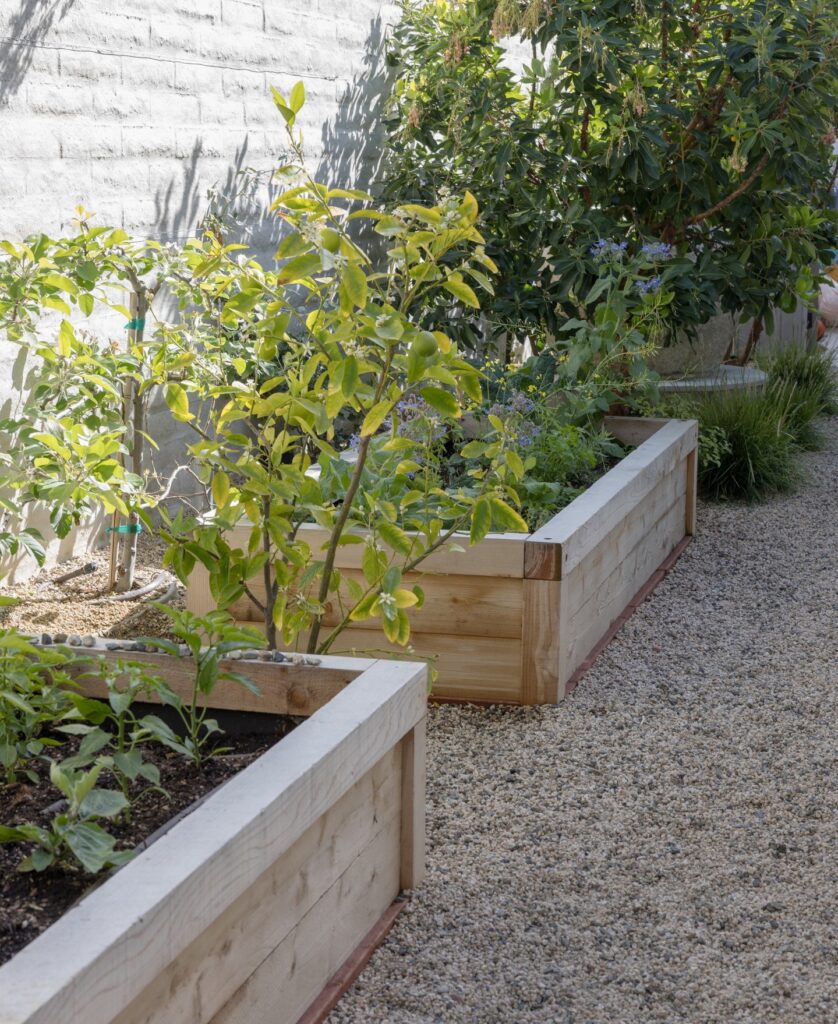
If you love sleek, modern lines, raised concrete planters are an excellent choice for minimalist garden design.
These planters provide clear structure and visual interest while keeping the space clean and organized. Whether you choose geometric rectangles or curved shapes, concrete beds create a subtle yet bold statement.
They work especially well in back porch decor settings, tying together hardscapes and greenery. Pair them with monochromatic gravel or turf for a balanced look. Inside the planters, go for ornamental grasses, succulents, or even herbs like rosemary and lavender that offer fragrance without excess foliage.
The elevation of raised beds makes gardening easier on the back and helps control soil conditions. Plus, they double as architectural elements, seamlessly blending function and form.
Consider using smooth, polished concrete for a contemporary vibe or exposed aggregate for a more natural texture. If you’d like a touch of warmth, flank the beds with warm wood benches or black metal accents for that ultimate outdoor living sophistication.
3. Black and White Color Scheme
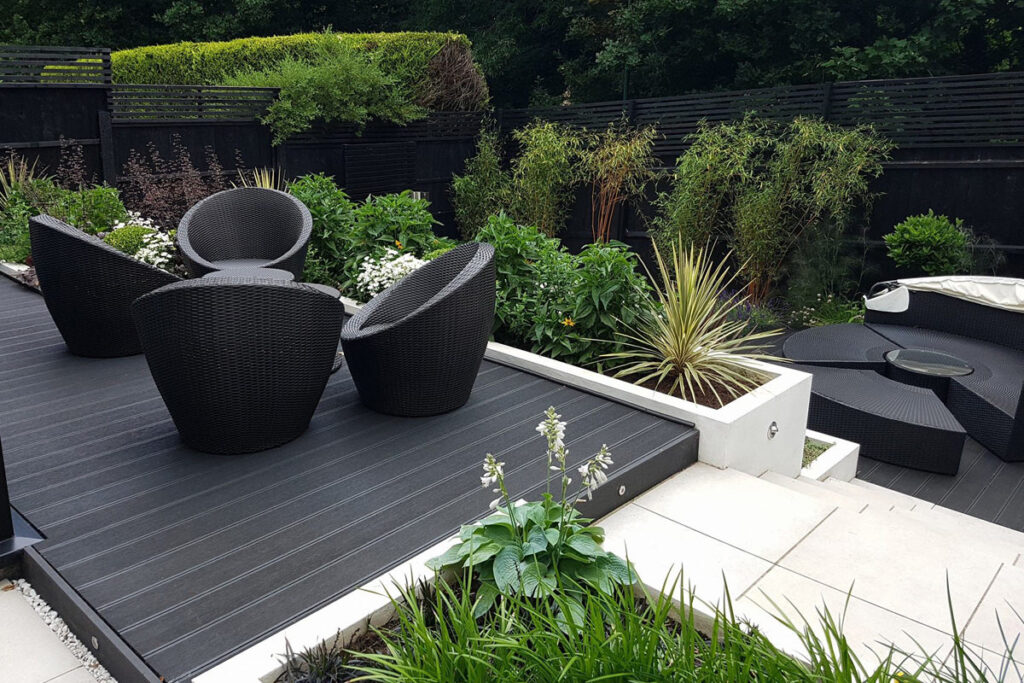
When it comes to minimalist design, a monochrome palette is a timeless choice.
Black and white gardens emphasize contrast and clarity. You can incorporate these colors through pots, outdoor furniture, fencing, and even plant choices. White hydrangeas paired with deep green foliage, matte black planters, and white gravel paths offer striking elegance without overwhelming the eye.
This aesthetic is ideal for creating a clean, cohesive modern patio or garden. Opt for black-framed pergolas, white lounge chairs, and neutral cushions for a layered yet understated look. It’s a beautiful match for modern patio furniture, especially in smaller urban gardens or narrow backyards.
Stick to minimalist accessories—maybe one or two sculptural pieces or a simple lantern. Keeping it simple allows each element to shine.
The black and white theme brings structure and sophistication to outdoor spaces, making it one of the most refined choices for minimalist back porch decor.
4. Built-In Bench Seating
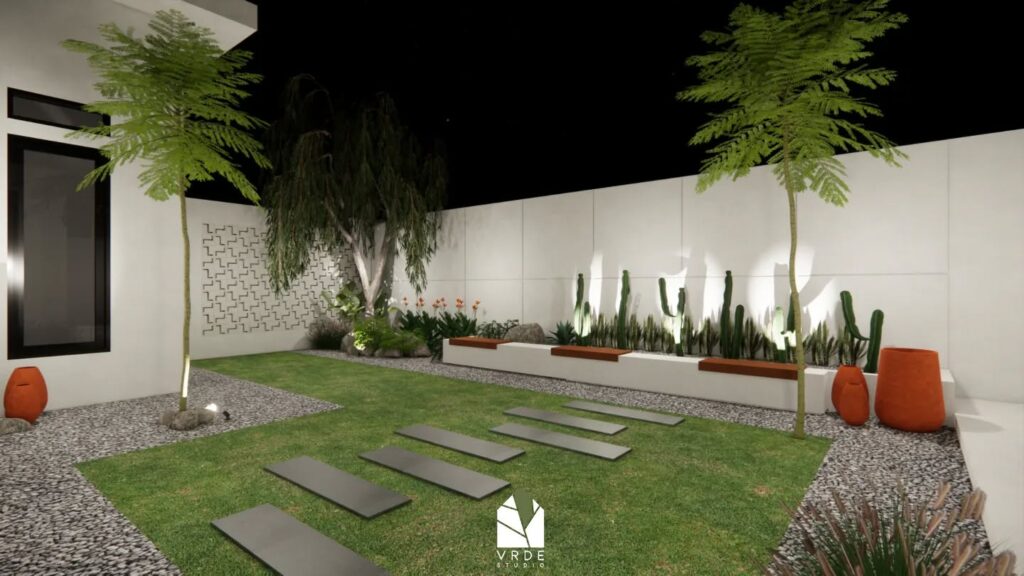
Built-in bench seating is a minimalist’s dream for maximizing space while maintaining a sleek appearance.
Instead of scattering chairs or bulky patio furniture, a bench built into a garden wall or planter saves space and offers a streamlined silhouette. It becomes an architectural focal point while doubling as functional seating.
Use materials like concrete, wood, or metal for a modern look. If you’re aiming for extra comfort, top it off with weatherproof cushions in neutral tones like beige, gray, or olive green. These tones enhance the calming vibe of minimalist gardens.
This idea is ideal for small back porches or urban patios where space is at a premium. It works beautifully alongside vertical gardens or minimalist fire pits. Plus, built-in seating reduces visual clutter and keeps pathways open.
This type of seating seamlessly integrates into modern back porch ideas, offering both elegance and efficiency in your outdoor living area.
5. Single Specimen Tree
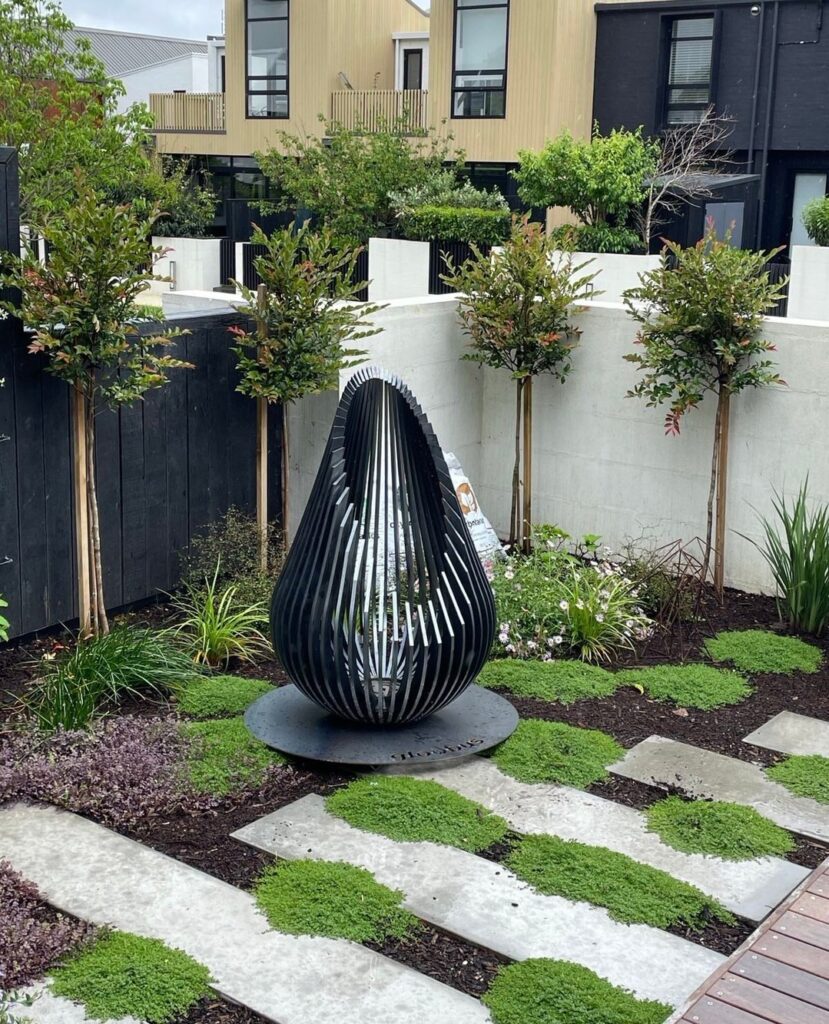
Instead of planting multiple trees, consider the minimalist beauty of a single specimen tree.
A Japanese maple, olive tree, or even a well-pruned ornamental cherry can serve as a dramatic focal point. In a minimalist garden, one perfectly placed tree can create symmetry, shade, and seasonal interest without the need for excess.
Plant it in the center of a gravel bed, or offset it against a modern fence for a visually powerful, yet simple, design. Surround it with a square or circular planting area edged with stone or steel to give it prominence.
The trick is in the details—select a tree with elegant form, interesting bark, or seasonal color that adds depth without clutter. This is perfect for those wanting modern back porch ideas with a hint of natural luxury.
Let the tree shine by keeping the surrounding elements sparse. This choice honors minimalism by showing how one thoughtfully chosen plant can transform the space.
6. Neutral Hardscaping
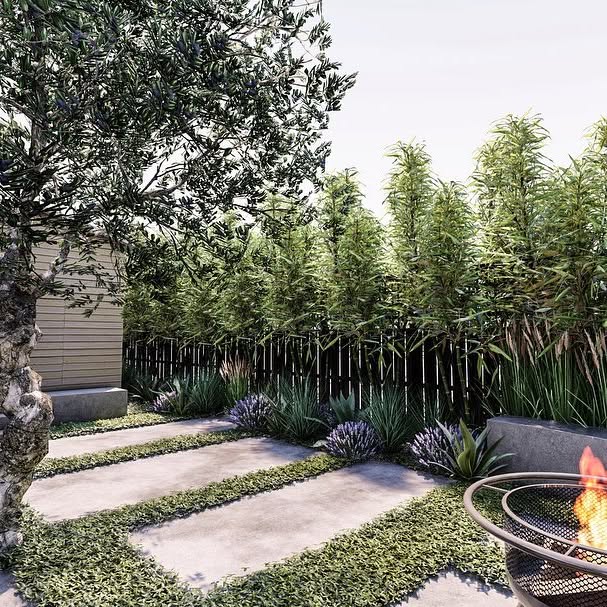
Neutral hardscaping forms the backbone of any minimalist garden. Think of smooth pavers, natural stone, and concrete in shades of gray, beige, and soft brown.
These tones ground the space while allowing greenery and furnishings to pop. Use consistent materials throughout for visual unity. A path made from rectangular gray pavers or sand-colored stepping stones draws the eye and simplifies navigation without distracting from the overall design.
You can extend the neutral palette to your walls, garden edging, and even retaining walls for a harmonious look. This approach blends well with modern patio furniture in muted tones, helping everything feel like part of a single vision.
It’s also incredibly durable and easy to maintain, ideal for those who want to spend more time relaxing than tending. Minimalist gardens thrive on simplicity, and neutral hardscaping ensures a timeless foundation that doesn’t compete for attention.
7. Vertical Garden Panels
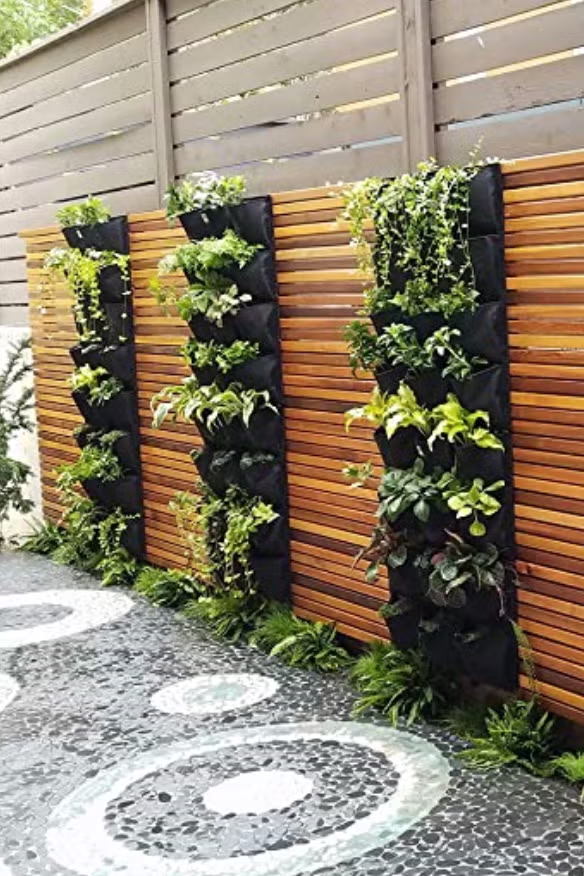
For smaller outdoor spaces or anyone looking to save ground area, vertical garden panels offer a minimalist yet lush solution.
Mounted directly on walls or fences, these green panels can feature succulents, ferns, herbs, or even mosses. They’re visually captivating but keep the floor space free for other minimalist elements like a bistro table or lounge chair.
Choose a uniform frame—like matte black metal or stained wood—to keep it cohesive. Vertical gardens work beautifully in back porch decor, especially when you want a pop of green without cluttering the floor.
They also act as natural privacy screens and can soften harsh architectural lines. With a drip irrigation system, they’re surprisingly low-maintenance too.
These living walls are a perfect representation of minimalist luxury—lush but controlled, natural yet refined. They’re ideal for apartment balconies, narrow gardens, or even alongside a minimalist outdoor kitchen setup.
8. Repetition in Planting
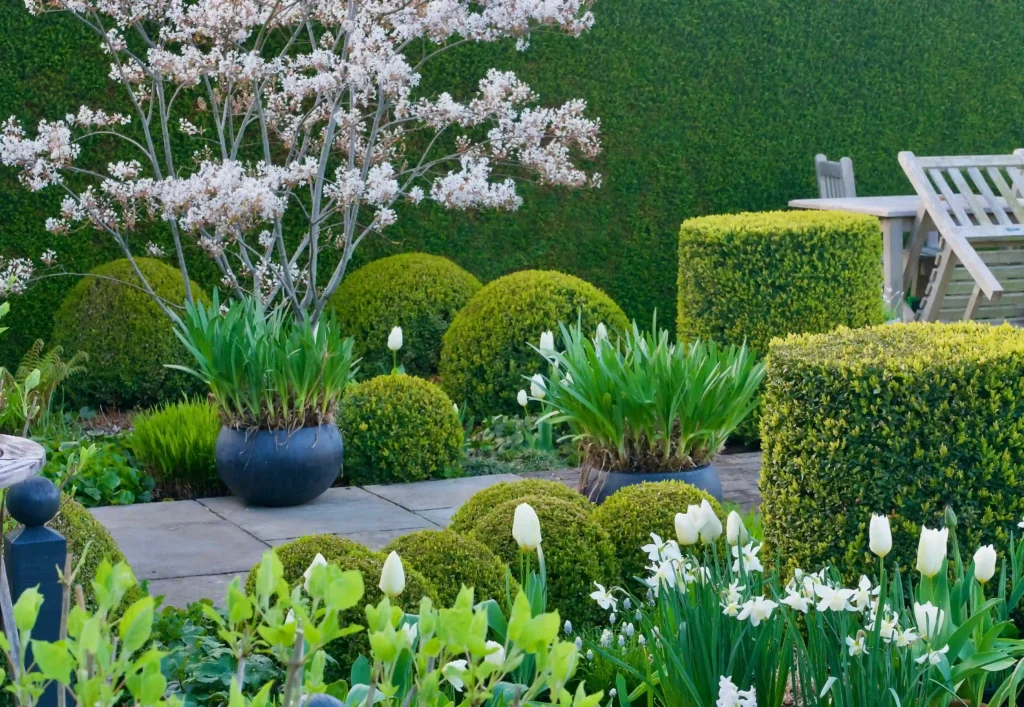
Minimalist gardens thrive on repetition. Instead of mixing various species, use repetition in your planting scheme for a more structured and calming effect.
Planting the same type of grass or shrub in rows or clusters brings rhythm and symmetry. For example, tall ornamental grasses like Miscanthus or sculptural plants like agave look stunning when repeated in a linear fashion.
This approach reduces visual chaos and creates a sense of order and flow. It’s a classic tactic in modern landscape design and aligns beautifully with outdoor living spaces aiming for a more serene aesthetic.
Combine repeated plantings with uniform containers in neutral tones, and you’ll have a cohesive, clean design that feels both modern and inviting.
Repetition doesn’t mean boring—it’s about building harmony. This minimalist principle is especially effective in smaller spaces, where every detail counts.
9. Clean-Lined Pergola
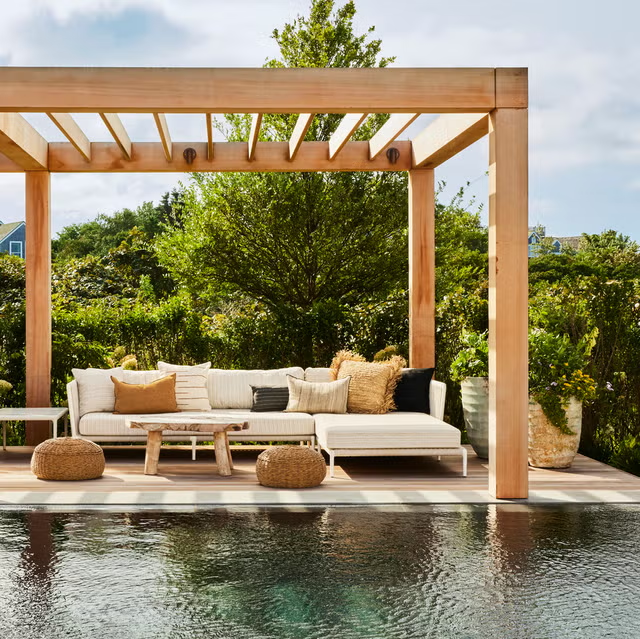
A pergola with clean lines can define your garden area without overwhelming it.
Opt for a design with straight beams, minimal ornamentation, and neutral colors like black, white, or natural wood. The result is an elegant structure that provides shade and structure, perfect for defining an outdoor dining or seating space.
Pergolas are great for incorporating modern patio furniture—like streamlined lounge chairs or a concrete dining table. You can also train minimalist climbing plants like jasmine or starflower to soften the beams without creating too much foliage.
Consider string lights or lanterns for evening ambiance. The simplicity of a modern pergola contrasts beautifully with textured walls or gravel floors, creating a balanced and inviting setting.
If you’re looking to elevate your back porch decor without over-complicating the space, this is a standout choice that offers both form and function.
10. Built-In Fire Pit
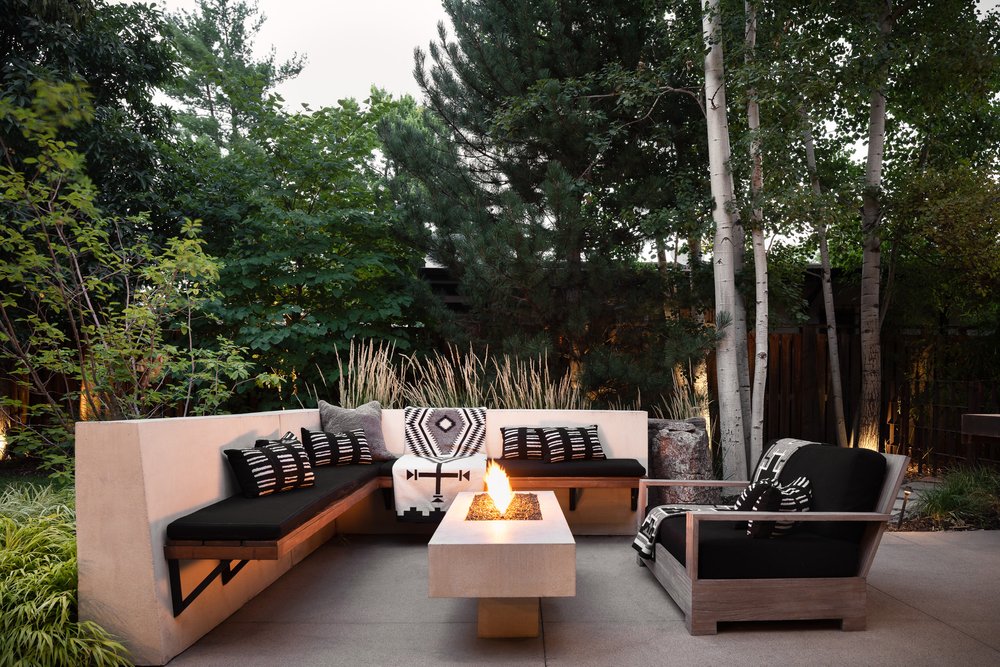
A built-in fire pit adds warmth and interest while staying true to minimalist principles.
Instead of a movable unit, choose a custom-built fire pit made from stone, concrete, or metal. Opt for a simple shape—like a circle or square—and keep the surrounding area open and uncluttered.
Use neutral paving around it, and consider surrounding it with low built-in seating for a cozy, streamlined design. This type of feature is perfect for modern back porch ideas that cater to year-round outdoor living.
A minimalist fire pit invites social interaction and relaxation without overpowering the space. It adds ambiance, especially in the evening, and doubles as a stylish focal point.
Stick to natural materials and monochromatic palettes to ensure it feels integrated and intentional.
11. Minimalist Water Feature
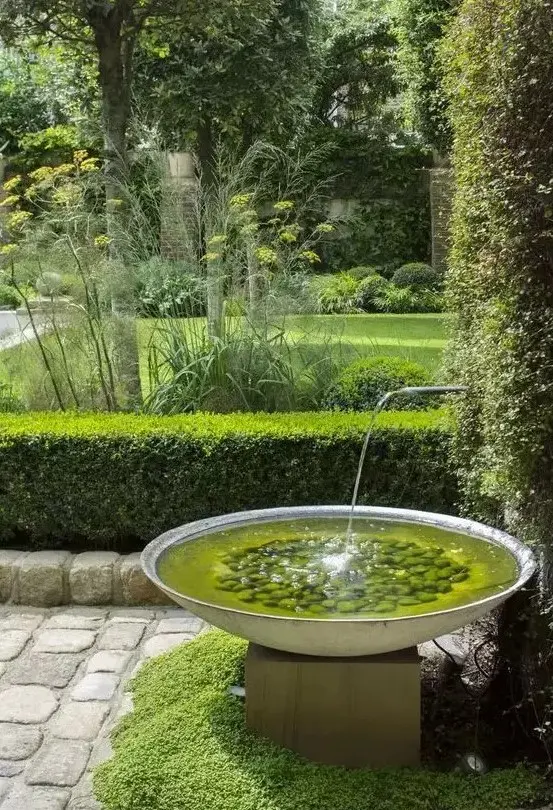
Minimalist water features offer a soothing element without stealing the spotlight.
A simple stone basin, a narrow wall fountain, or a geometric reflecting pool can bring the calming sound of water into your space. These features should blend in with the garden rather than dominate it.
Choose materials like black slate, polished concrete, or stainless steel for a clean aesthetic. A well-placed water feature adds movement and serenity, tying together your outdoor living elements.
Position it near a seating area or at the end of a path to create a peaceful destination. Keep plantings around it minimal—perhaps a few grasses or moss for texture.
Water features embody the tranquility that minimalist gardens strive for, adding sensory depth in a very controlled and elegant way.
12. Container Gardening with Uniform Pots
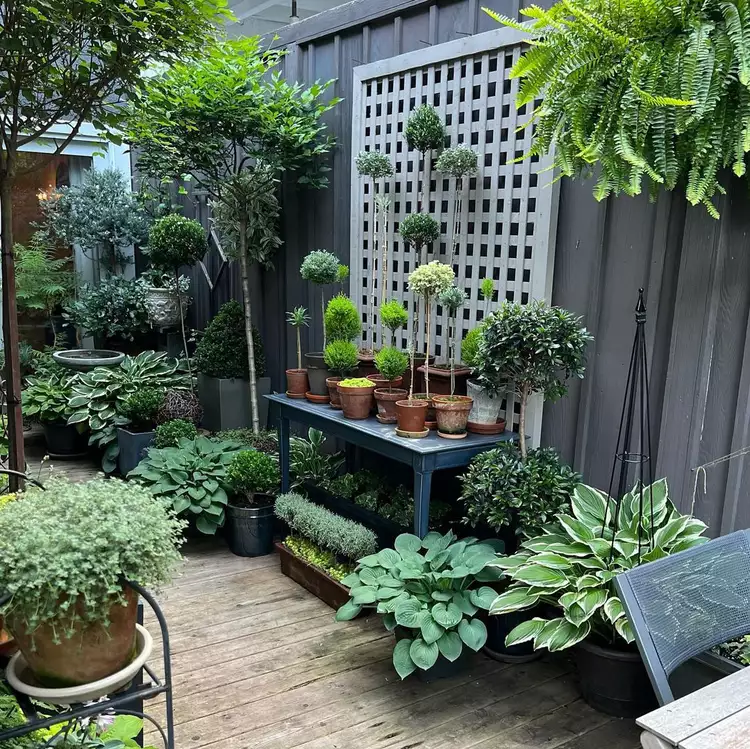
Minimalist gardening isn’t limited to in-ground landscaping—container gardening with uniform pots offers the same clean, intentional aesthetic with more flexibility.
Choose planters in a consistent material and color—like matte ceramic, concrete, or galvanized metal. Opt for neutral tones such as gray, white, charcoal, or terracotta for that modern touch. By using uniform containers, you create visual harmony even if the plants inside them vary slightly.
This setup is ideal for back porches, small patios, or apartment balconies where ground space is limited. You can group the containers in rows or staggered clusters depending on your layout. Stick with sculptural, low-maintenance plants like snake plants, boxwood, aloe vera, or dwarf citrus trees for both beauty and simplicity.
What’s great about this idea is how easy it is to update or rearrange depending on the season or your mood. You can also tuck in a few herbs for a practical and stylish outdoor living upgrade. Uniform containers help emphasize the greenery itself without adding clutter, making this one of the most versatile minimalist garden ideas.
13. Symmetrical Pathways
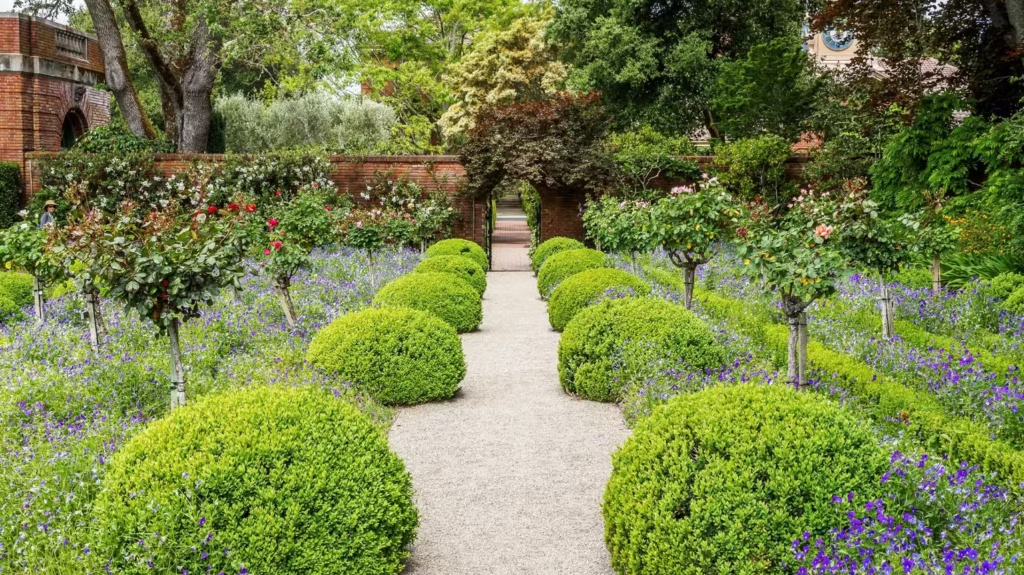
Symmetry brings calm and order to a garden, which is why symmetrical pathways are a minimalist must-have.
Design a path using repeated pavers or stepping stones, spaced evenly across a gravel or lawn base. Choose modern materials like large rectangular slate tiles, concrete slabs, or crushed granite. The result is a clean line that leads the eye and invites movement through your garden without unnecessary ornamentation.
Pair your pathway with repetitive plantings on either side—grasses, succulents, or low shrubs—for a symmetrical, balanced look. This kind of structured design works beautifully with modern back porch decor, seamlessly blending walkways with outdoor seating or dining areas.
Lighting can elevate this further. Use low, modern LED stake lights to accent the pathway in the evenings, keeping with the minimalist vibe. The overall look is refined and functional—ideal for anyone who wants a garden that’s easy to maintain but visually striking.
14. Minimalist Privacy Screens
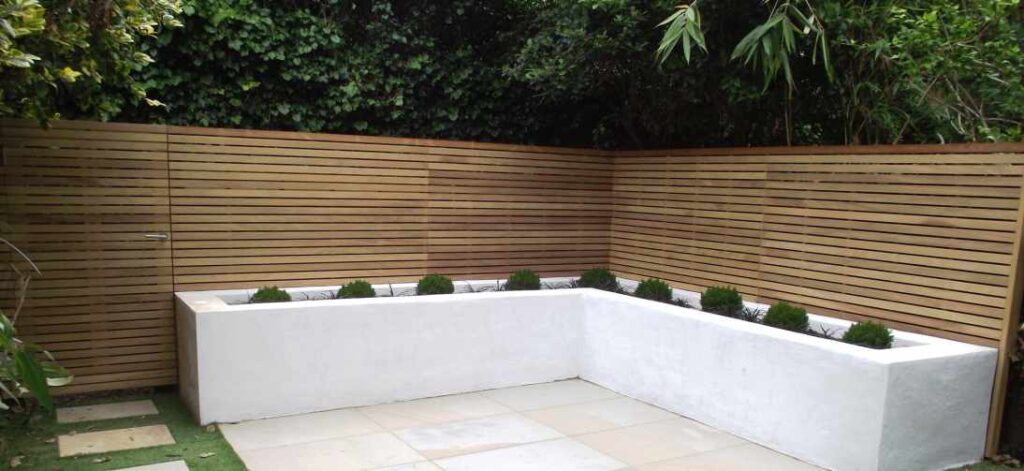
In modern outdoor living, privacy is essential—but bulky fences and thick hedges don’t always align with minimalist style. Enter the minimalist privacy screen.
These sleek structures are typically made from materials like powder-coated metal, slatted wood, or frosted glass. Their purpose is to define spaces and shield views without dominating the garden’s aesthetic. Their geometric forms and neutral colors work well in small backyards and urban patios.
Instead of overwhelming the space, these screens contribute to its structure. Add a few strategically placed plants—like bamboo or climbing jasmine—for softness without excess. Minimalist privacy screens can also double as art installations, especially when designed with interesting cut-outs or patterns.
Pair them with modern patio furniture in similar tones for a cohesive look. This approach maintains your garden’s open, airy feel while creating cozy nooks for relaxation or outdoor dining.
15. Geometric Lawn Layout
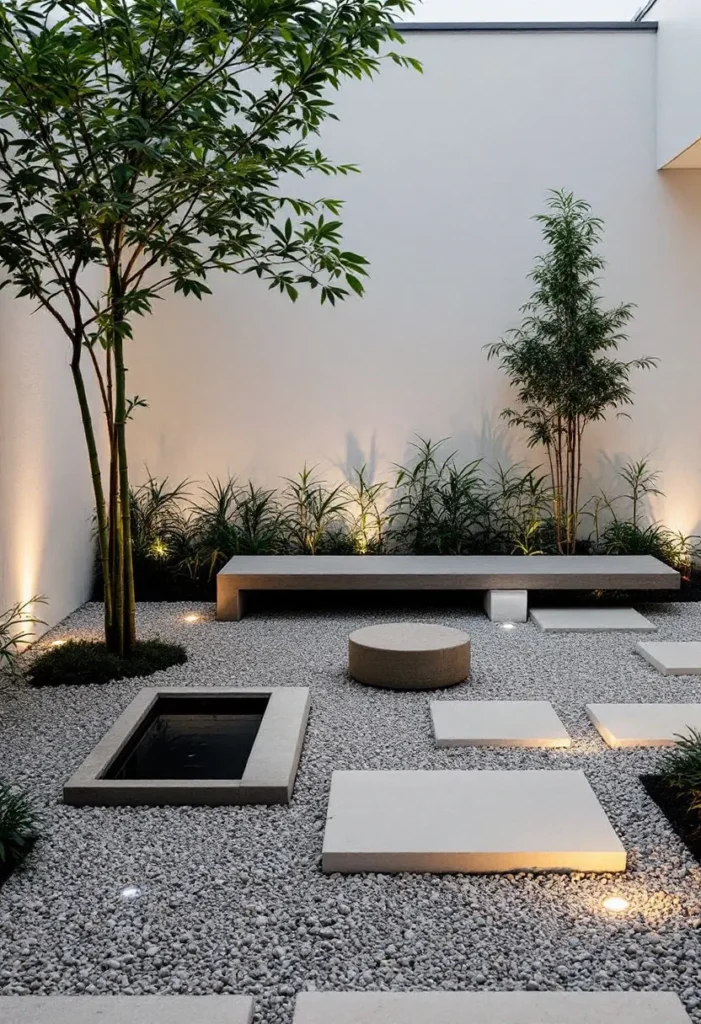
Lawns don’t have to be sprawling, organic shapes. A minimalist garden benefits greatly from geometric lawn layouts—think rectangles, squares, or even narrow strips.
Defined lawn areas can be bordered with stone, gravel, or concrete for a polished edge. These shapes provide structure and contrast against loose textures like ornamental grasses or pebbled pathways. The sharp lines and clear boundaries add modern appeal and make your outdoor space feel thoughtfully designed.
Use the lawn as an anchor, surrounding it with minimalist elements like a water feature, stone bench, or uniform planter beds. The controlled greenery offers a soft break from hardscaping without creating visual clutter.
This style is particularly fitting for back porch ideas where the lawn can visually extend the porch’s footprint. Keep the lawn well-manicured for that crisp, clean look essential to minimalist design.
16. Sculptural Outdoor Lighting
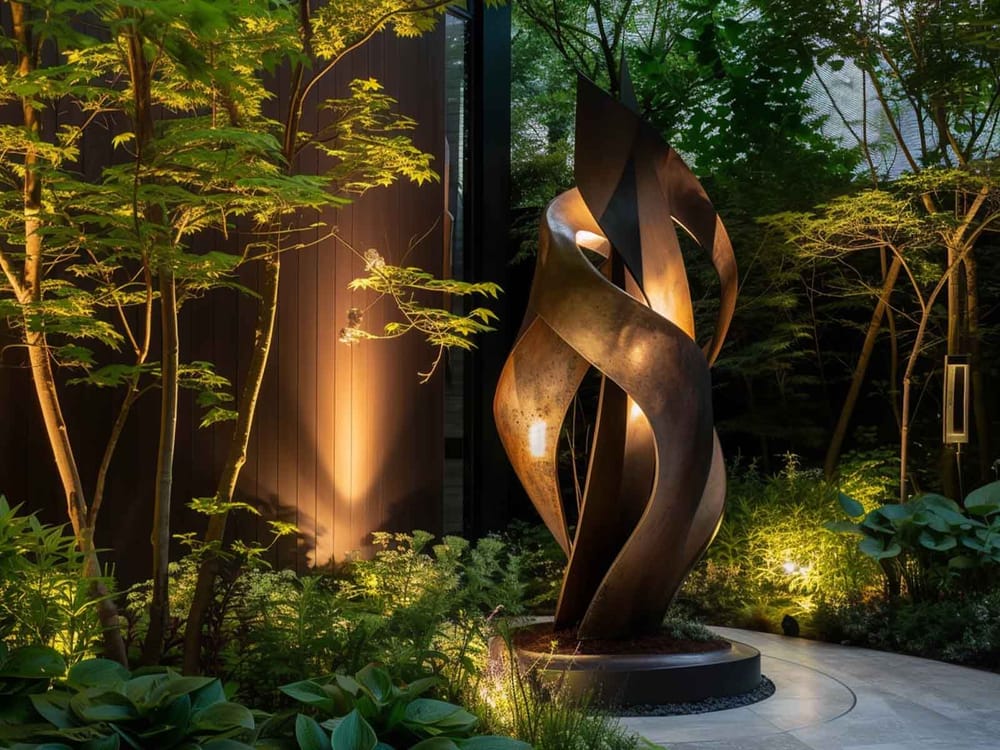
Lighting is more than functional—it can also be a powerful design element in minimalist gardens.
Instead of traditional lanterns or ornate fixtures, go for sculptural lighting that doubles as art. Think sphere-shaped lights, sleek bollards, or embedded LED strips along pathways and walls. These lighting elements provide soft illumination without overwhelming the space.
Use lighting to highlight architectural elements like pergolas, planters, or water features. Stick to neutral or metallic finishes and soft white bulbs to maintain a serene ambiance.
Not only does sculptural lighting enhance nighttime usability, but it also adds an artistic touch that complements modern patio furniture and clean-lined garden designs. This kind of lighting is subtle yet powerful—making a bold statement without shouting.
17. Minimalist Outdoor Dining Zone
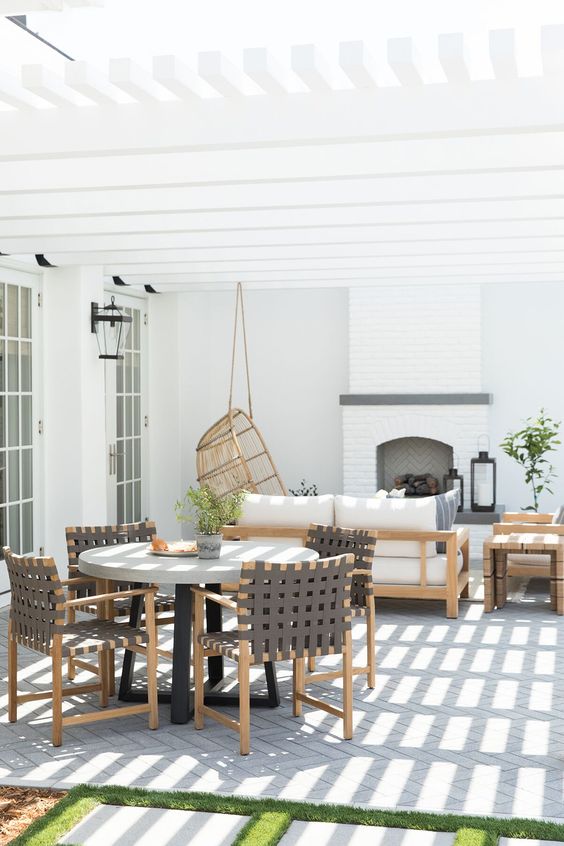
Create a dedicated dining space that embraces minimalism by sticking to the essentials.
Choose a sleek outdoor dining table in a durable material like teak, concrete, or powder-coated steel. Pair it with modern, streamlined chairs in neutral tones—no ornate patterns or loud colors needed. A single centerpiece, like a ceramic vase or a lantern, can add just enough character without breaking the minimalist aesthetic.
Keep the area grounded with a neutral outdoor rug or large pavers. You can define the space further with a pergola or slatted privacy wall for a cozy, intentional feel.
This layout is perfect for outdoor living and entertaining while maintaining a clean, clutter-free look. By focusing on quality materials and simplicity, you can enjoy your meals outside in style and serenity.
18. Linear Plant Beds
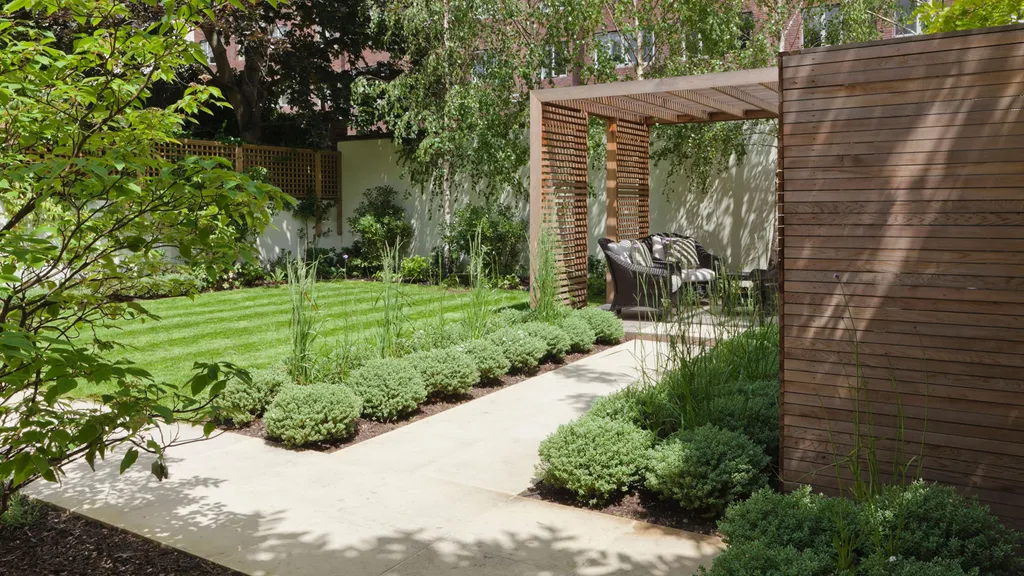
Instead of curvy or scattered garden beds, go for linear plant beds that follow the lines of your home, fence, or walkway.
These rectangular or L-shaped plantings help frame your garden while maintaining structure and organization. Fill them with plants that have clean silhouettes—think lavender, sedge, boxwood, or even tall grasses for texture. Keep plant colors and shapes cohesive to avoid visual chaos.
Use stone, metal, or wood edging for a defined look that matches your garden’s palette. Linear plant beds are incredibly practical too—they’re easier to weed, water, and maintain than irregular ones.
This type of garden design works wonderfully in both small and large spaces, aligning with modern back porch ideas and allowing for easy integration with furniture or hardscaping.
19. Subtle Decorative Elements
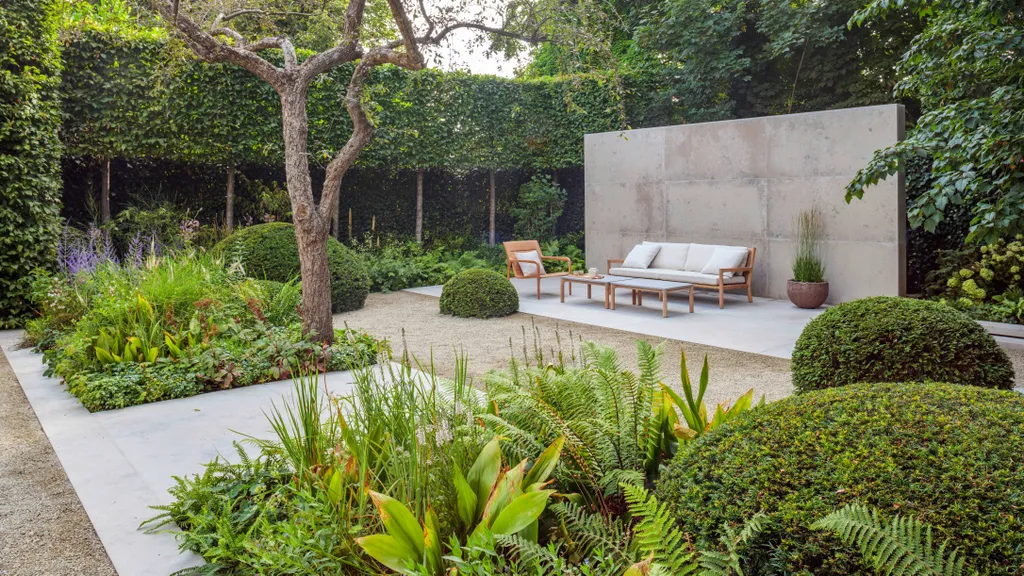
A minimalist garden doesn’t mean you can’t have decoration—it just needs to be subtle and intentional.
Think about a single large ceramic pot, a sleek statue, or a minimalist birdbath placed strategically as a focal point. These elements should add interest without overpowering the space.
Choose items made from natural materials or those with simple geometric shapes. Stick to one or two focal pieces rather than scattering items throughout the garden.
This restraint allows each decorative element to have greater impact. It also contributes to the calm and cohesive feel of the garden, making your space feel curated rather than cluttered.
This idea works beautifully with modern patio furniture and contemporary garden layouts, helping you personalize your space while still honoring minimalist principles.
20. Cohesive Furniture Sets
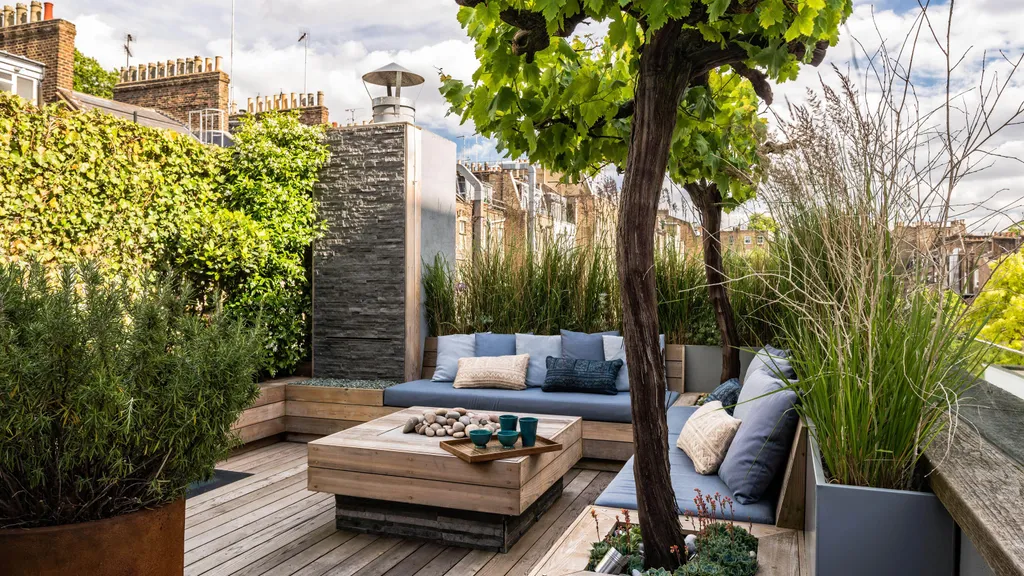
Cohesion is key when it comes to minimalist outdoor furniture. Instead of mixing different styles, stick with one streamlined set that complements the rest of your garden.
Look for modern patio furniture with clean lines, neutral colors, and durable materials. Powder-coated aluminum, teak wood, and concrete are great choices. Avoid ornate patterns or bulky shapes. Focus on simple silhouettes that echo the shapes in your garden.
Opt for modular pieces that can be rearranged easily. A low-profile sofa with plush but minimal cushions, a matching coffee table, and a pair of loungers can transform your space into a sleek retreat.
Cohesive furniture brings harmony to your outdoor living area, tying in with back porch decor and other design elements. It’s a great way to make your garden feel like a true extension of your home.
21. Barely-There Borders
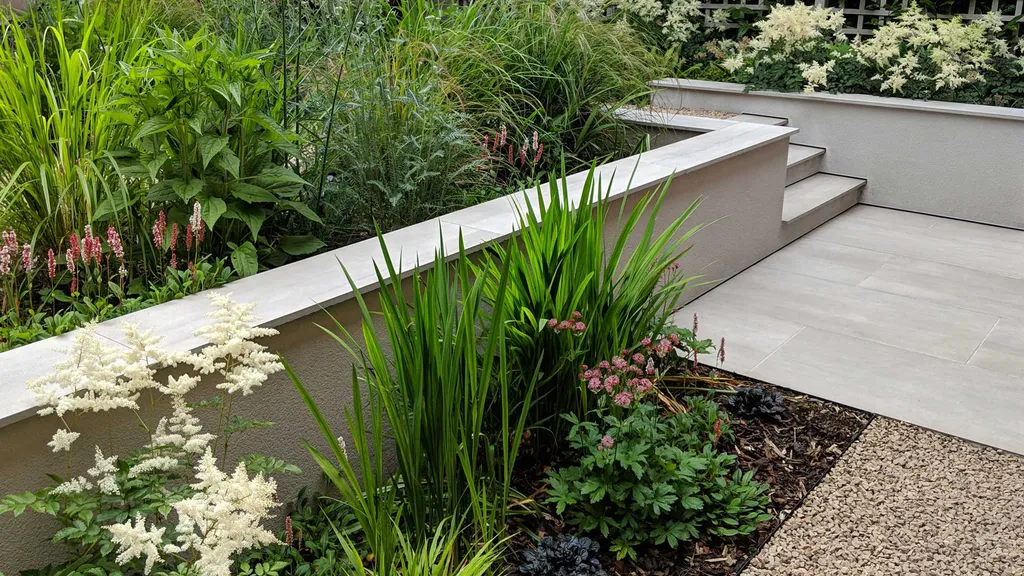
To create seamless transitions between different parts of your garden, use barely-there borders that define space without calling attention to themselves.
Think about thin metal edging between gravel and lawn, narrow concrete strips along planting beds, or wooden dividers embedded in the ground. These subtle borders keep everything neat without interrupting the visual flow of your garden.
Barely-there borders are particularly useful in minimalist gardens where the goal is order, not obstruction. They ensure plants and materials stay in place while maintaining a soft, cohesive look.
Use them to outline geometric lawns, walkways, or seating zones. Combined with neutral hardscaping and clean planting lines, these quiet details help bring the entire minimalist aesthetic together beautifully.
Conclusion
Minimalism in the garden is about more than reducing clutter—it’s about creating intentional, peaceful outdoor spaces where every element serves a purpose. Whether you’re working with a compact back porch or a sprawling yard, minimalist design helps you focus on what truly matters: clean lines, calming textures, and functional beauty.
By incorporating these 21 minimalist garden ideas—from neutral hardscaping and sculptural lighting to single specimen trees and cohesive furniture sets—you can craft a modern outdoor living space that’s as serene as it is stylish.
The best part? These ideas are incredibly adaptable, allowing you to design a garden that aligns with your personal style while offering a calm retreat just steps from your door. So whether you’re upgrading your back porch decor or rethinking your entire landscape, simplicity might just be your most powerful tool.
